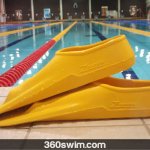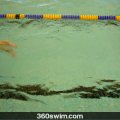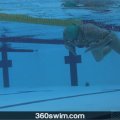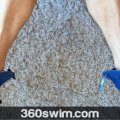BREASTSTROKER'S KNEE: 3 TIPS TO AVOID IT
If you swim breaststroke exclusively every time you get in the pool, you could be setting yourself up for a common and painful injury: breaststroker's knee. Many competitive swimmers who didn't train properly in their younger years now suffer from chronic knee pain.
Don't become a statistic. This guide will explain what breaststroker's knee is and share five essential tips, from technique correction to strength training on how to prevent it.
Dive Into: A Guide to Preventing Breaststroker's Knee
- What Causes Breaststroker's Knee?
- Tip #1: Perfect Your Kick Technique
- Tip #2: Build Supporting Strength (Dryland)
- Tip #3: Alternate Your Strokes
- Tip #4: Listen to Your Body and Rest
- Tip #5: Stretch and Use Out-of-Pool Support
- A Final Word of Advice
- Frequently Asked Questions
What Causes Breaststroker's Knee?
While many non-competitive swimmers don't realize it, swimming is by no means a sport void of injury. Breaststroker's knee is one of the most common.
Generally speaking, the injury is a result of two particular phases in the mechanics of the breaststroke kick. First, the whip kick of the stroke repeatedly stretches the medial ligament in the knee. Then, when the legs are brought back together during the propulsive phase, the knee is subject to extreme external rotation.
As our knees were not designed specifically for these motions, over time they can wear on the medial collateral ligament (MCL).
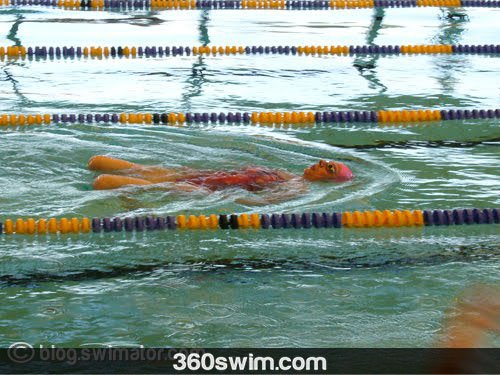
Tip #1: Perfect Your Kick Technique
The way you kick is a massive factor in preventing knee pain. The number one technical cause of breaststroker's knee is a kick that is too wide.
When you allow your feet to sweep out in a huge circle far beyond the width of your knees, you place the maximum possible stress on your MCL.
The solution is to focus on a narrower, more powerful kick. Think about bringing your heels directly up to your butt, keeping your knees within the frame of your body. The power should come from your hips and a whip-like snap of your lower legs, pushing water directly backward, not from a wide, sweeping motion.
Tip #2: Build Supporting Strength (Dryland)
The best way to protect any joint is to strengthen the muscles that support it. A dryland routine focused on your hips and legs is a powerful tool for preventing knee injuries. Stronger glutes, hips, and hamstrings will stabilize your knee during the kick and take stress off the ligaments.
Focus on simple bodyweight exercises:
- Glute Bridges: To activate your glutes.
- Squats and Lunges: To build overall leg and hip strength.
- Clamshells: To strengthen the hip abductors, which are crucial for knee stability.
Tip #3: Alternate Your Strokes
By alternating swimming strokes, you can put less repeated and direct strain on the knees and medial ligaments. This is not only beneficial for your knees but also helps keep up practice with your other strokes.
As a side benefit, you will become a much more versatile swimmer, will have a more varied swim workout, and will actually improve your breaststroke as well.
Tip #4: Listen to Your Body and Rest
If your knee is beginning to bother you, try avoiding the breaststroke for as long a period as possible.
With enough time, the ligaments can recuperate and rehabilitate themselves if left alone. Pain is your body's signal that something is wrong, so listen to it.
Tip #5: Stretch and Use Out-of-Pool Support
Consistent stretching before and after swimming can greatly reduce your risk of injury by keeping your body limber.
For out-of-pool support, while some athletes use braces, this is not a primary prevention method for swimmers. If you have significant pain, your doctor may recommend a specific brace to be worn during recovery on land, but the focus for prevention should always be on technique and strength.
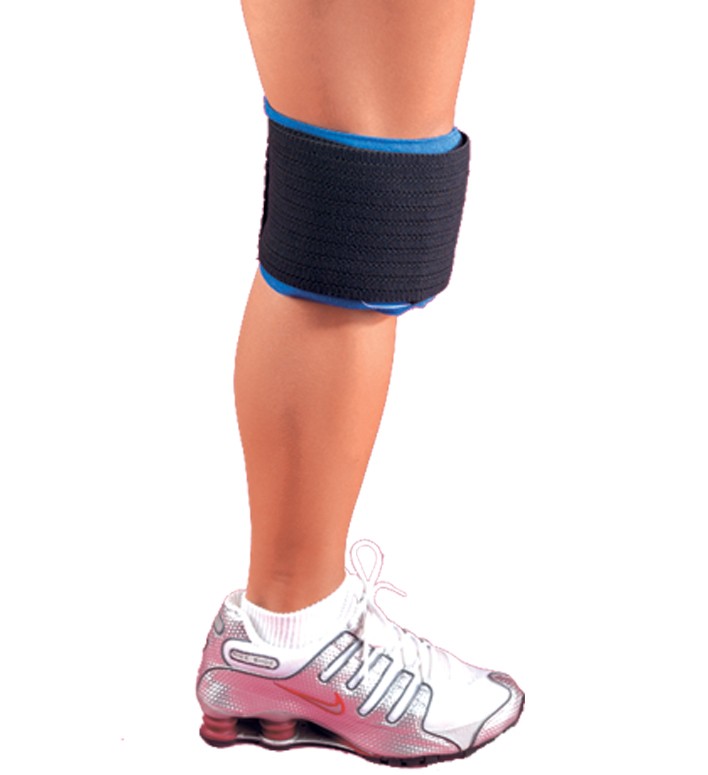
A Final Word of Advice
Consult your doctor if you feel you may have any serious or persistent swimming-related injuries before getting back in the pool.
Chances are you don't swim breaststroke far enough or often enough to worry about your knees. However, if you do, it is definitely a good idea to break it up. Don't swim your entire workout with just one stroke. Get creative, compose your workouts with variety, and you'll prevent an injury before it's too late.
This guide was written in collaboration with Jenna, a journalism student at Saint Louis University and a former competitive swimmer.
Frequently Asked Questions
What is breaststroker's knee?
Breaststroker's knee is a common overuse injury caused by the stress the breaststroke kick puts on the knee's medial collateral ligament (MCL). The whip-like motion and external rotation of the kick can cause strain and pain over time.
What is the most common technical flaw that causes knee pain?
A kick that is too wide is the primary cause of knee stress. When your feet sweep out far beyond your knees, it places maximum strain on the MCL. A narrower, more efficient kick is much safer and more powerful.
How can I prevent breaststroker's knee?
Prevention involves a combination of strategies: 1) Perfecting a narrower kick technique, 2) Building supporting strength in your hips and glutes with dryland exercises, 3) Alternating strokes in your workouts, and 4) Resting when you feel pain.
What dryland exercises can help prevent knee pain?
Strengthening the muscles that support your knees is key. Focus on exercises for your glutes, hips, and hamstrings. Simple bodyweight exercises like squats, lunges, glute bridges, and clamshells are highly effective.
What should I do if my knee starts hurting?
If you feel pain, the best course of action is to stop swimming breaststroke and rest. If the pain is serious or persists, you must consult your doctor before getting back in the pool.
 LNURL1DP68GURN8GHJ7URP0YHRXD3SWDMKJMFWVDHK6TMVDE6HYMRS9A4HSCNCWFXSH3NN0H
LNURL1DP68GURN8GHJ7URP0YHRXD3SWDMKJMFWVDHK6TMVDE6HYMRS9A4HSCNCWFXSH3NN0H


